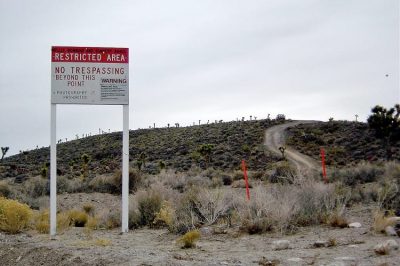Bloop: Large Mysterious Animal of the Deep Sea? or Ice quakes?
Share

Spectrogram of Bloop. (NOAA)
Bloop is the nickname given to a sound widely heard in the Pacific Ocean in 1997. The sound was detected by hydrophones almost 5000 km apart and was a powerful low-frequency sound, which led to a wide range of speculation for several years.
The noise was first detected by National Oceanic and Atmospheric Administration (NOAA) of the United States Government, using a technology set up in the 1960s during the Cold War era. The US Navy installed an assemblage of underwater microphones, called Hydrophones, that are now used by civilian scientists following the end of the Cold War and the development of more sophisticated surveillance systems.
NOAA’s Acoustic Monitoring Project uses these Hydrophones to pick up sounds from the ocean, deep underwater. These sounds are usually of low-frequency and are audible only after a speed enhancement. Generally, these sounds can be attributed to man-made vessels like boats, submarines, geographical incidents like a volcanic eruption, an iceberg’s movement, or from marine life – like the calls of a whale.

A hydrophone being lowered into the sea. (Dave Mellinger/Oregon State University / Flickr)
Speculations
Hence, when the NOAA picked Bloop in 1997, it was naturally speculated that it belonged to some sort of geographical activity or that it originated from an animal. But the fact that it was heard by hydrophones 5000 km apart and the rapid variation in its frequency led to the speculation that it had a biological origin, which meant that the animal making these sounds should have been much larger than the largest underwater animal we know.
Any unknown military activity was subsequently ruled out, as confirmed by Christopher Fox, the director of NOAA’s Acoustic Monitoring Project in 2002. The other notable theory was that the sound had geographical origins, specifically from a Volcanic activity or Antarctic ice movement. The drifting of ice on the seabed or the mixing of hot lava with the sea were also a possibility as they produce sounds of a similar nature.
Conclusion
Hydrophones located at several points in the ocean continued to pick up sounds with similar spectrograms to that of Bloop. In 2008, the NOAA confirmed that Bloop’s pattern is consistent with Icequakes, which are generated by large icebergs as they crack and fracture. The NOAA received sufficient evidence as it tracked the icequakes from an iceberg named A53a as it disintegrated in early 2008. They revealed that the icequakes emitted sounds with very similar spectrograms to that of Bloop.
From these revelations, the origin of Bloop had been triangulated by the NOAA to be approximately between Bransfield Straits and the Ross Sea, which according to the NOAA is a well-known source of cryogenic signals. They revealed that icequakes of sufficient amplitude may even travel distances further than 5000 km as water is an excellent conductor of sound.
The mystery surrounding the sound stoked the flames of many myths, some involving a huge mysterious creature and some others involving supernatural activity. Robert Dziak, an NOAA and Oregon State University seismologist, explained that these sounds like the Bloop are heard in their sped-up forms by the general public. Bloop is distinguishable when it is sped up by a factor of sixteen, which according to him may have led to a misunderstanding that it is a sound with a biological origin.
The aquatic life and the deep waters are yet to be fully charted and explored by mankind. The mystery surrounding Bloop is one such example, where the lack of a scientific explanation for many years made it compelling.
Enjoyed this article? Also, check out “The Mysterious Wow! Signal: Aliens? A Comet? Or Just a Glitch?“.
Fact Analysis:
STSTW Media strives to deliver accurate information through careful research. However, things can go wrong. If you find the above article inaccurate or biased, please let us know at [email protected]













